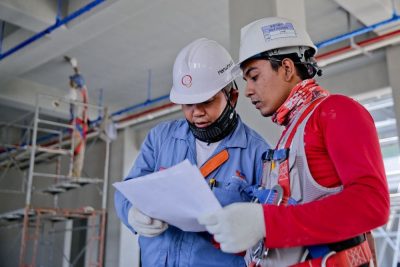
When the birds start chirping, the snow finally melts, and the flowers begin to bloom, there’s one thing every homeowner knows: spring cleaning season has arrived. While scrubbing floors and organizing closets top the list, one essential task often gets overlooked, your air conditioning system. Trust us, including an AC inspection checklist in your spring home maintenance routine isn’t just smart, it’s essential.
Why? Because nothing is worse than your AC calling it quits on the hottest day of summer. You don’t want to discover a dusty coil, leaky duct, or overworked compressor when it’s already 90°F in the shade.
Why Spring Is the Best Time for an AC Inspection
Spring is that golden sweet spot when your AC hasn’t been used in months but is just weeks away from being your best friend again. It’s the perfect time to prepare before the demand on your cooling system skyrockets.
The benefits are real:
- Catching issues early prevents costly repairs.
- Clean systems run more efficiently, lowering energy bills.
- Maintenance extends the lifespan of your unit.
- You’ll avoid the rush when AC technicians are booked solid during peak summer months.
Think of it as a tune-up for your home’s comfort system.
What Is an AC Inspection Checklist?
An AC inspection checklist is exactly what it sounds like, a comprehensive list of everything that needs to be checked, cleaned, and tested on your air conditioning system. It ensures nothing gets missed and helps you stay ahead of problems before they snowball.
Whether you’re a DIY-savvy homeowner or prefer to hire a professional, this list is your blueprint for AC health.
The Complete AC Inspection Checklist for Spring
Here’s what you should look at when doing your spring AC check:
- Replace or Clean the Air Filter: Start here. A clogged air filter restricts airflow, forces your system to work harder, and decreases efficiency. It also affects your indoor air quality. Change your filter every 1–3 months depending on usage and whether you have pets or allergies.
- Inspect the Thermostat: Make sure your thermostat is working properly and reading the right temperature. Consider upgrading to a programmable or smart thermostat if you haven’t already, it’ll save you money in the long run.
- Clean the Condenser Coils: Over the winter, your outdoor unit has probably collected dirt, leaves, and debris. Cleaning the condenser coils helps the AC dissipate heat more efficiently. Always turn off the power before cleaning.
- Check Refrigerant Levels: Low refrigerant levels can indicate a leak and lead to poor cooling performance. This step is usually best left to a professional, as handling refrigerants can be dangerous.
- Inspect Electrical Components: Look for worn-out wires, burned fuses, or loose connections. These can lead to system failure or, worse, electrical fires.
- Test System Controls: Your system should start, operate, and shut off properly. Run it through a full cycle to ensure it responds correctly to thermostat settings.
- Examine Ductwork for Leaks: Leaky ducts reduce efficiency by letting cooled air escape before it reaches your rooms. Sealing ducts can significantly lower energy costs and improve airflow.
- Clean the Drain Line and Pan: A clogged condensate drain can cause water to back up and damage your system, or even your home. Clean the line and empty the drain pan to avoid mold growth and overflow.
- Lubricate Moving Parts: Proper lubrication reduces friction in motors and bearings, improving efficiency and preventing wear and tear.
- Listen for Unusual Noises: If your unit makes banging, squealing, or rattling noises, it’s trying to tell you something. Strange sounds often signal worn-out or loose parts.
When to Call the Pros
While homeowners can tackle some basic items, certain checks are better left to certified HVAC technicians. Tasks like checking refrigerant, inspecting electrical components, and deep-cleaning coils require expertise and tools that go beyond the average DIY kit.
If you notice poor airflow, weird smells, or the unit is short-cycling, it’s time to get help. Investing in professional AC maintenance not only keeps your system in top shape but can also catch potential issues before they cost thousands.
Specializing in climate-sensitive items and high-efficiency appliance transportation, we understand how vital it is to keep your AC system secure and functional during a move. Whether it’s relocating your condenser unit safely or scheduling post-move AC inspections, we ensure your transition is seamless and your cooling stays uninterrupted.
Don’t Forget Indoor Air Quality
AC systems do more than cool your home, they influence the air you breathe. A clean, well-maintained system filters out dust, pollen, and other airborne pollutants. If you or your family suffer from allergies, spring maintenance becomes even more important.
Consider adding a whole-home air purifier or high-efficiency filter to your spring AC upgrade plan.
How AC Maintenance Saves You Money
Here’s a truth bomb: skipping AC maintenance is more expensive than scheduling it. Small problems like dirty filters, clogged drain lines, or loose wires grow into massive repair bills if ignored.
Routine maintenance:
- Lowers monthly energy costs
- Extends equipment lifespan (by years!)
- Helps avoid emergency repair calls
- Boosts your home’s resale value
If your unit is more than 10 years old, regular checks become even more critical.








